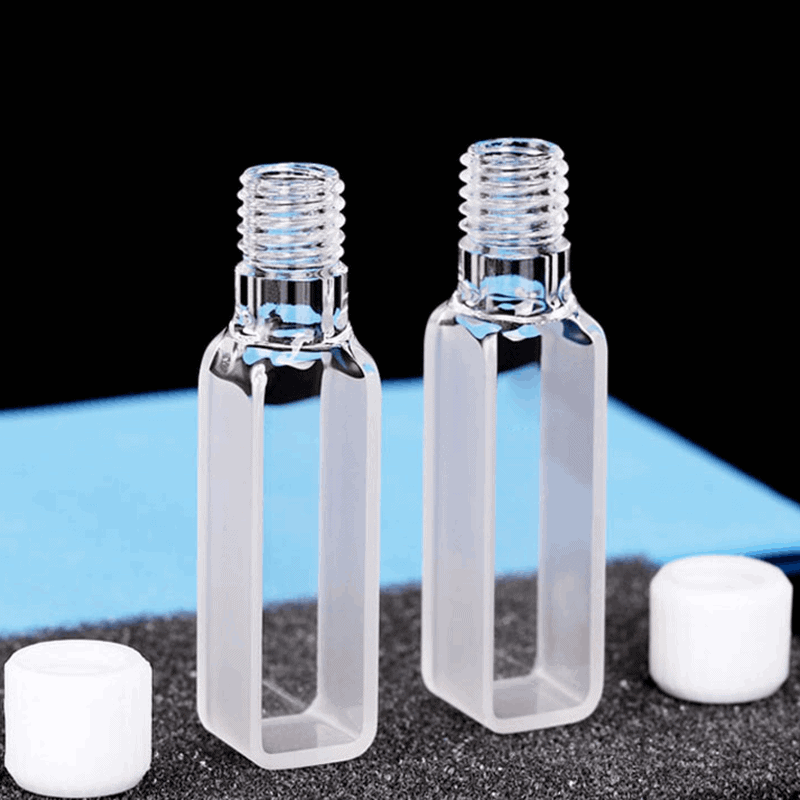The Advantages of Applying Quartz Vials in Clinical Research
The Advantages of Applying Quartz Vials in Clinical Research
Blog Article

The Advantages of Cuvettes and Quartz Vials in Scientific Research
In clinical study, the accuracy and consistency of proportions are paramount, specially in areas like spectroscopy, compound analysis, and biology. One important factor that assures accuracy in these reports may be the cuvette, especially quartz vial. Knowledge the benefits of cuvettes and the benefits of applying quartz vials may significantly impact the outcome of experiments and lab work.
Accuracy in Spectroscopy
Cuvettes are important for keeping water products in several diagnostic devices, most notably spectrophotometers. These units gauge the absorbance or transmission of mild through a sample, and the cuvette serves because the pot for the sample during analysis. The size and product of the cuvette enjoy an essential role in ensuring the accuracy of the measurements. Quartz vials, particularly, present exceptional optical quality, allowing for accurate mild sign across a wide variety of wavelengths, including ultraviolet (UV) light. That makes quartz vials a fantastic choice for spectroscopic studies, where precision is critical.
Longevity and Compound Resistance
Quartz vials be noticeable for his or her longevity and resistance to harsh chemicals. Unlike plastic cuvettes, quartz vials are less likely to weaken or react with chemicals in the sample, ensuring that the results of the test stay unaffected by potential contamination. This characteristic makes quartz vials particularly useful in conditions wherever extreme solvents or high temperatures are involved. Their capability to resist severe problems without diminishing the reliability of the taste is one of the main causes they are favored in several lab applications.
Accuracy in Measurement and Form
How big is a cuvette is not really a one-size-fits-all situation. The dimension of the cuvette, such as their course size, impacts the volume of the taste and the amount of gentle that passes through. Choosing the correct cuvette size for the particular test guarantees that the email address details are maybe not skewed due to below or over-concentration of the sample. Quartz vials come in a number of dimensions and styles, letting analysts to select the most appropriate choice based on the requirements of their experiment. This mobility contributes to more accurate knowledge and provides for greater get a grip on over experimental conditions.
Transparency and Mild Sign
Quartz is noted for their excellent openness, especially in the ultraviolet (UV) and obvious light spectra. This makes quartz vials suitable for use within tools that want apparent optical trails, such as for instance UV-Vis spectrophotometers. The superior light indication qualities of quartz make sure that the light goes through the sample with minimal spreading or assimilation, leading to more accurate readings. For studies that need high accuracy, quartz vials give a definite advantage around other materials.
Long-Term Reliability
When in study laboratories, it is essential to possess reliable resources that maintain their integrity over time. Quartz vials are not only chemically immune but in addition extremely resilient, indicating they're less inclined to knowledge use and tear. That long-term consistency assures that researchers may use quartz vials for expanded times without fretting about degradation or the requirement for repeated replacements, causing cost-effectiveness in the extended run.
To conclude, both cuvettes and quartz vials offer a range of benefits that enhance the quality and accuracy of lab experiments. From their superior optical quality for their compound opposition and longevity, these methods are essential in scientific research. By selecting the right cuvette size and using quartz vials, scientists can guarantee accurate sizes and obtain more reliable benefits within their studies. Report this page